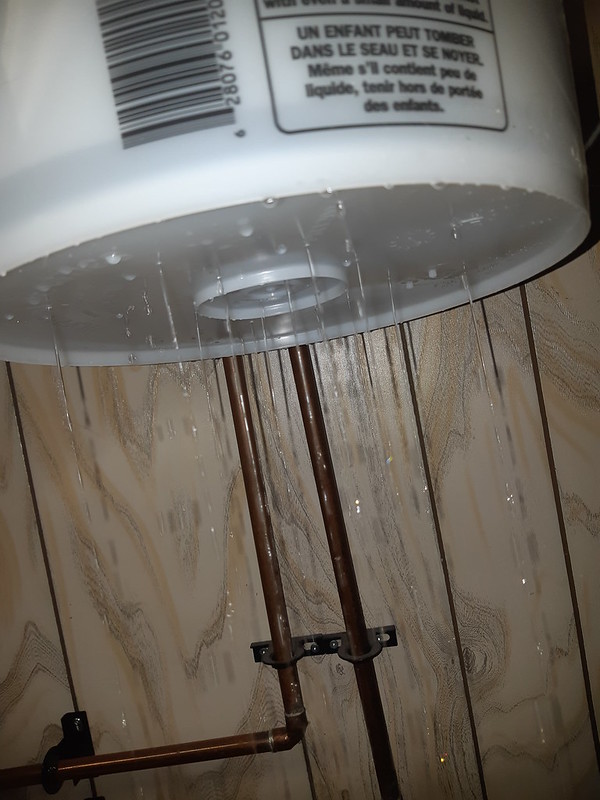Hey all,
I've brewed on a BrewZilla 3.1 65L for a year. As a small homebrew club/brewery in planning (
we are definitely on hiatus due to COVID), I selected it due to its size, price, consistency, and ease of cleanup. For the most part, I really enjoy working with this device. I've brewed on it roughly every two weeks for a year, making by my count
28 batches and
at least 250 gallons of wort. Combining them with the FermZilla 7-gallon fermenters was a low-cost way of permitting pressure transfers, experimenting with different dry hops (by splitting a ten-gallon batch), and very easy clean-up.
Here's a few gripes about it. Again, I'd call myself a BrewZilla expert as I can imagine few have brewed this many times on the platform.
Luckily, most of these can be overcome with simple changes. My hope is that this post can be the start of a one-pager in HBT for brewers starting out on the BrewZilla. While I know that the 65L has a few distinct differences over the 35L, I imagine that either of these devices exhibit the following issues.
- Temperature accuracy- I noticed quite early on that many of my brews were finishing quite dry, despite setting a higher mash temp. This was cited in an earlier post--there is a few degrees' difference between the temperature of the liquid at the bottom of the BrewZilla, where the thermometer/heating elements are situated, and the grain bed, which is located an inch or two directly above. What I've found is that the thicker the mash/larger grain bill, the wider the temperature offset can be. Once time, I set the controller to 148 degrees and measured 141 degrees in the center of the grain bed using a probe.
- How to address this: It's all about correcting an "offset". For a 10-gallon batch of NEIPA, in which sweeter finishes are often desired, I have set it to 162 and concluded that this gets me to about 154-156--right in between the criss-cross of alpha & beta amylase conversions.
- Capacity - BrewZilla 65L definitely yields 10-gallons of pretty much any beer that's under 1.060/15 Plato. Any bigger, you're going to be overflowing, the mash will be at the brim.
- How to address this: Definitely, don't assume you can get 10 gallons from it without sparging--a full wort mash will have the device at overflow for a brew as low as 10.55/13.5 Plato. Not sure how else to handle this without sparging, except to perhaps start with a lower post-mash SG and boil it down more? Add some malt extract?
- Efficiency - I've had mash efficiency ranging from 60% to 72%. Some of this is due to the aforementioned temperature issues, likely problems with filtration in the bottom of the mash, and perhaps other unforeseen issues.
- How to address this:
- Double-crush the malt, and use rice hulls when working with high-protein adjunct malts
- Watch the mash temps as described above--this also means that mashing out should offset to 174 instead of 168. Big difference here.
- Weep holes/overflow tube - The overflow tube and weep holes on the sides of the malt pipe can fill with grain during a large mash. These grains can flow straight down into the space between the malt pipe and the heating elements, resulting in scorched grain, or [much] worse, a jammed pump. Un-jamming a pump is a solid hour of taking the bottom apart, carefully unscrewing several parts, unwiring the entire device, and cleaning out the pump. Oh, then re-wiring and putting it all back together before testing the pump again. So the best way to solve this problem is to avoid it.
- How to address this:
- Use the rubber cap on the malt pipe cap to cover the overflow tube--yes, this means the mash liquid could overflow, but where are you going? Watch your mash! At least for a good 20 minutes to make sure the flow is stable.
- Duct tape the weep holes on the sides of the malt pipe. This is essential for larger mashes. Then simply yank the tape off when mash out is complete so you can lift the pipe out using the handy steel bar.
- Hop utilization - recently, I've noticed that the hop spider is getting a bit jammed up during whirlpool/hop stands. It also seems to be doing worse with age--no doubt 30 uses can clog up the steel mesh, despite heavy-duty cleaners.
- How to address this: I moved back to using a large BIAB bag for the hops--this permitted me to easily and safely lift the bag out, slosh it around the wort, and replace it, several times in the whirlpool. I have no doubt that this permitted the hops a more comprehensive contact time with the wort.
Do these tips help? Are some stating the obvious? Are others up for debate? Please let me know.
Again, this BrewZilla is a great device! I moved from a three-vessel keggle setup with propane and have no doubt this is resulting in more consistent recipe execution. Also, a smaller footprint makes it easier to place in most any indoor space (mine is in the garage). For the 65L, an electrician added a new 20A breaker and the 220V outlet in less than an hour. It may seem odd that someone trying to go pro would select a single-vessel system, but being able to have shorter brew days means I can brew more often. Focusing on recipes is way more fun than fussing with equipment!
Cheers!





















![Craft A Brew - Safale S-04 Dry Yeast - Fermentis - English Ale Dry Yeast - For English and American Ales and Hard Apple Ciders - Ingredients for Home Brewing - Beer Making Supplies - [1 Pack]](https://m.media-amazon.com/images/I/41fVGNh6JfL._SL500_.jpg)




































